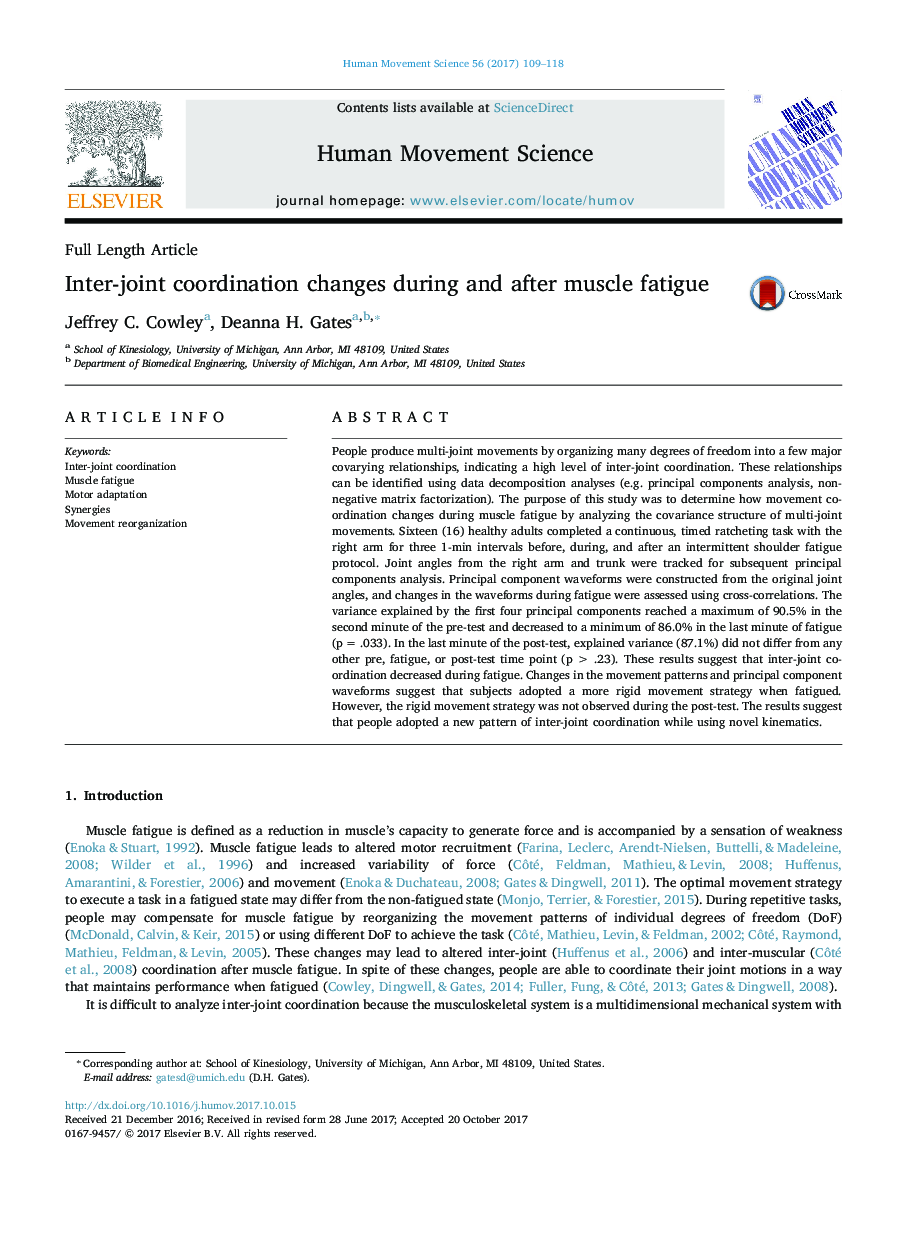| Article ID | Journal | Published Year | Pages | File Type |
|---|---|---|---|---|
| 7291036 | Human Movement Science | 2017 | 10 Pages |
Abstract
People produce multi-joint movements by organizing many degrees of freedom into a few major covarying relationships, indicating a high level of inter-joint coordination. These relationships can be identified using data decomposition analyses (e.g. principal components analysis, non-negative matrix factorization). The purpose of this study was to determine how movement coordination changes during muscle fatigue by analyzing the covariance structure of multi-joint movements. Sixteen (16) healthy adults completed a continuous, timed ratcheting task with the right arm for three 1-min intervals before, during, and after an intermittent shoulder fatigue protocol. Joint angles from the right arm and trunk were tracked for subsequent principal components analysis. Principal component waveforms were constructed from the original joint angles, and changes in the waveforms during fatigue were assessed using cross-correlations. The variance explained by the first four principal components reached a maximum of 90.5% in the second minute of the pre-test and decreased to a minimum of 86.0% in the last minute of fatigue (pâ¯=â¯.033). In the last minute of the post-test, explained variance (87.1%) did not differ from any other pre, fatigue, or post-test time point (pâ¯>â¯.23). These results suggest that inter-joint coordination decreased during fatigue. Changes in the movement patterns and principal component waveforms suggest that subjects adopted a more rigid movement strategy when fatigued. However, the rigid movement strategy was not observed during the post-test. The results suggest that people adopted a new pattern of inter-joint coordination while using novel kinematics.
Related Topics
Life Sciences
Neuroscience
Cognitive Neuroscience
Authors
Jeffrey C. Cowley, Deanna H. Gates,
